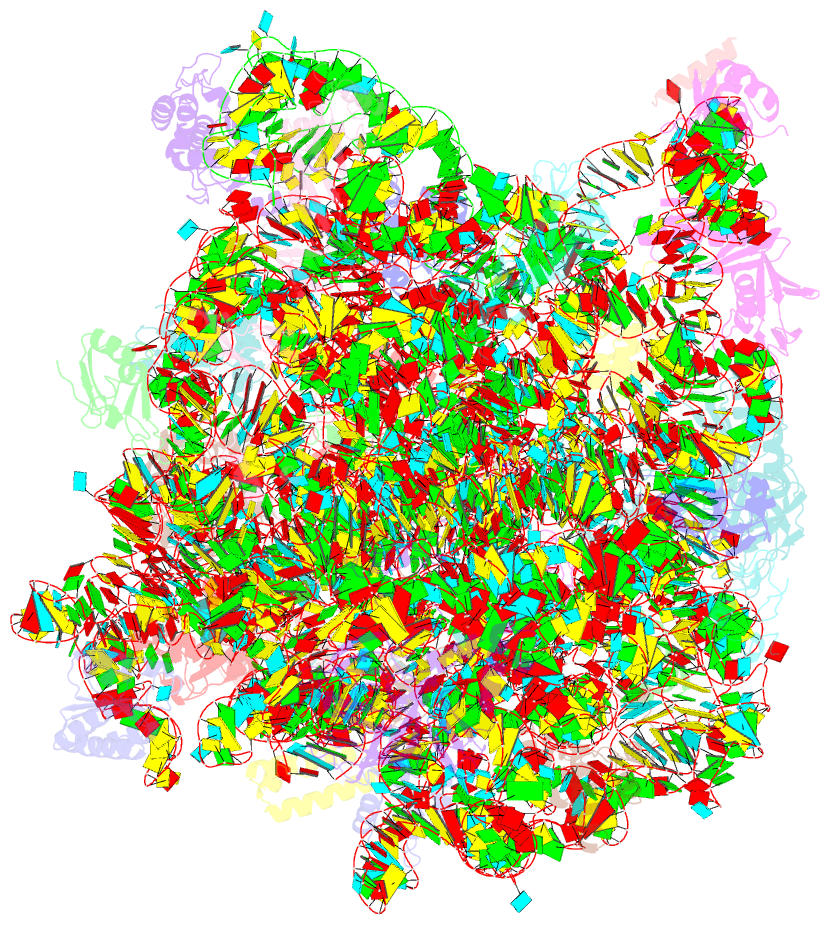Summary information and primary citation
- PDB-id
- 1vqn; SNAP-derived features in text and JSON formats;
DNAproDB
- Class
- ribosome
- Method
- X-ray (2.4 Å)
- Summary
- The structure of cc-hpmn and cca-phe-cap-bio bound to the large ribosomal subunit of haloarcula marismortui
- Reference
- Schmeing TM, Huang KS, Strobel SA, Steitz TA (2005): "An induced-fit mechanism to promote peptide bond formation and exclude hydrolysis of peptidyl-tRNA." Nature, 438, 520-524. doi: 10.1038/nature04152.
- Abstract
- The large ribosomal subunit catalyses the reaction between the alpha-amino group of the aminoacyl-tRNA bound to the A site and the ester carbon of the peptidyl-tRNA bound to the P site, while preventing the nucleophilic attack of water on the ester, which would lead to unprogrammed deacylation of the peptidyl-tRNA. Here we describe three new structures of the large ribosomal subunit of Haloarcula marismortui (Hma) complexed with peptidyl transferase substrate analogues that reveal an induced-fit mechanism in which substrates and active-site residues reposition to allow the peptidyl transferase reaction. Proper binding of an aminoacyl-tRNA analogue to the A site induces specific movements of 23S rRNA nucleotides 2618-2620 (Escherichia coli numbering 2583-2585) and 2541(2506), thereby reorienting the ester group of the peptidyl-tRNA and making it accessible for attack. In the absence of the appropriate A-site substrate, the peptidyl transferase centre positions the ester link of the peptidyl-tRNA in a conformation that precludes the catalysed nucleophilic attack by water. Protein release factors may also function, in part, by inducing an active-site rearrangement similar to that produced by the A-site aminoacyl-tRNA, allowing the carbonyl group and water to be positioned for hydrolysis.





